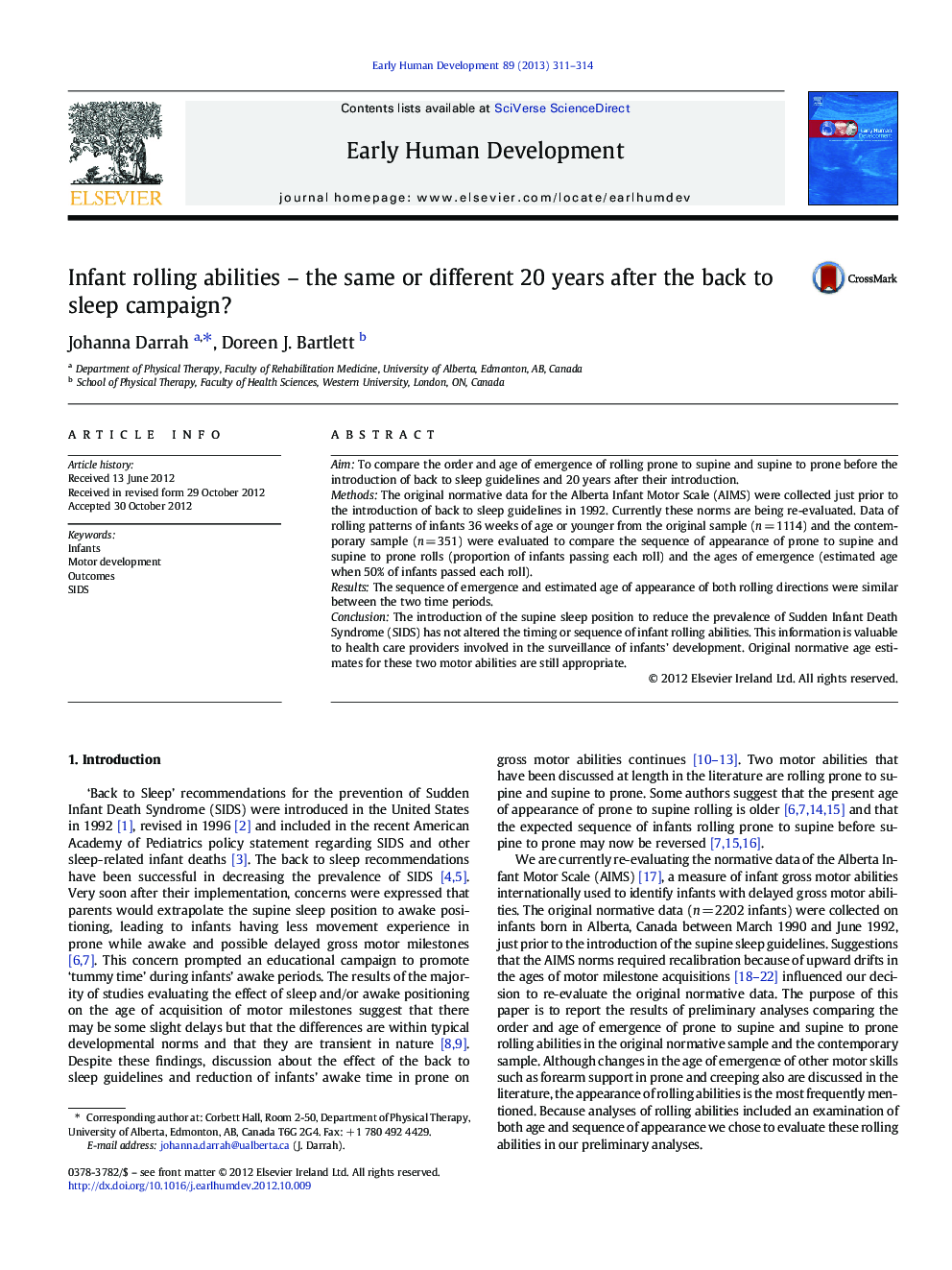| Article ID | Journal | Published Year | Pages | File Type |
|---|---|---|---|---|
| 6172010 | Early Human Development | 2013 | 4 Pages |
AimTo compare the order and age of emergence of rolling prone to supine and supine to prone before the introduction of back to sleep guidelines and 20 years after their introduction.MethodsThe original normative data for the Alberta Infant Motor Scale (AIMS) were collected just prior to the introduction of back to sleep guidelines in 1992. Currently these norms are being re-evaluated. Data of rolling patterns of infants 36 weeks of age or younger from the original sample (n = 1114) and the contemporary sample (n = 351) were evaluated to compare the sequence of appearance of prone to supine and supine to prone rolls (proportion of infants passing each roll) and the ages of emergence (estimated age when 50% of infants passed each roll).ResultsThe sequence of emergence and estimated age of appearance of both rolling directions were similar between the two time periods.ConclusionThe introduction of the supine sleep position to reduce the prevalence of Sudden Infant Death Syndrome (SIDS) has not altered the timing or sequence of infant rolling abilities. This information is valuable to health care providers involved in the surveillance of infants' development. Original normative age estimates for these two motor abilities are still appropriate.
